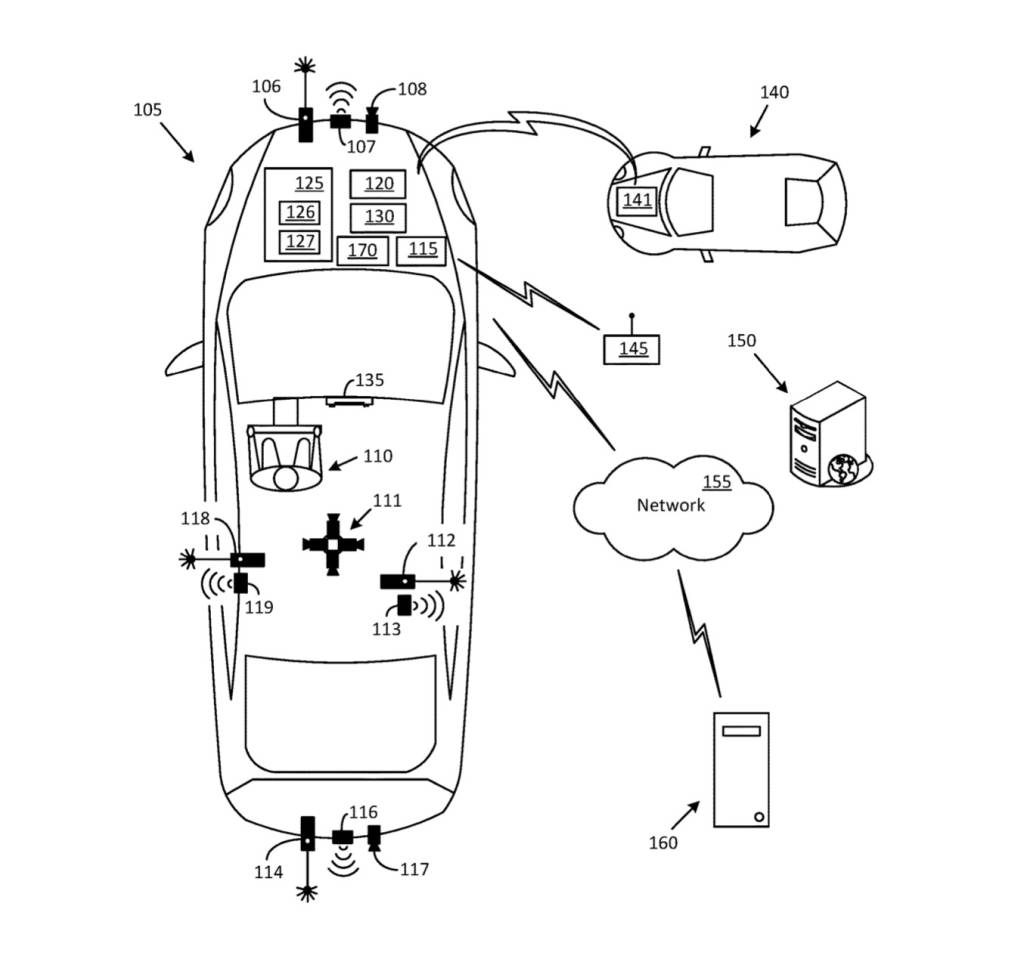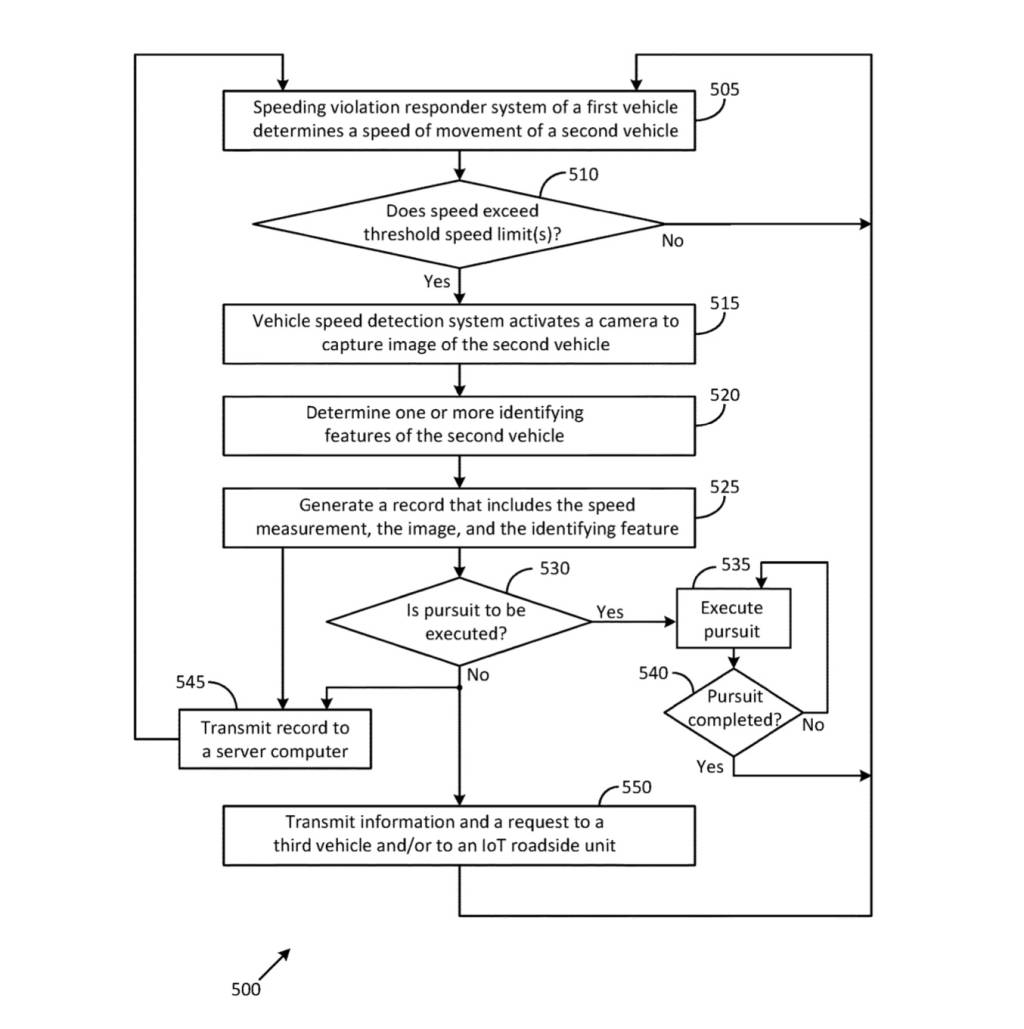- Ford patented tech that would have a vehicle report a driver for speeding
- The patent said vehicles would monitor other vehicles using onboard cameras
- It’s unclear what legal argument Ford would make for the tech if implemented
Ford is trying to patent a way for its cars to report speeding drivers to the police.
A patent application from the automaker titled “Systems and Methods for Detecting Speeding Violations” was published by the United States Patent and Trademark Office (USPTO) Jul. 18 2024, and was originally filed by Ford Jan. 12, 2023.

Ford speed-violation detection patent image
In the application, Ford discusses using cars to monitor each other’s speeds. If one car detects that a nearby vehicle is being driven above the posted limit, it could use onboard cameras to photograph that vehicle. A report containing both speed data and images of the targeted vehicle could then be sent directly to a police car or roadside monitoring units via an Internet connection, according to Ford.
Using vehicles for speed surveillance would make cops’ jobs easier, as they wouldn’t have to quickly identify speeding violations and take off in pursuit, Ford notes in the application. It also means some of that work could be delegated to self-driving cars, which could be equipped to detect speeding violations, the automaker adds.

Ford speed-violation detection patent image
It’s unclear what legal argument Ford would make should it try to implement this tech, as human police officers wouldn’t be witnessing the alleged speeding being reported through the connected cars. Speed cameras already provide stationary enforcement of speed limits, but they can only issue tickets based on a vehicle’s license plate number because they can’t confirm who is driving.
Ford has also tried to patent a “night drive mode” that would limit vehicle speeds at night for everyone—including first responders. This takes things a bit further by turning drivers into unwitting snitches. Ford regularly files patent applications for new car tech, not all of which makes it to production.
